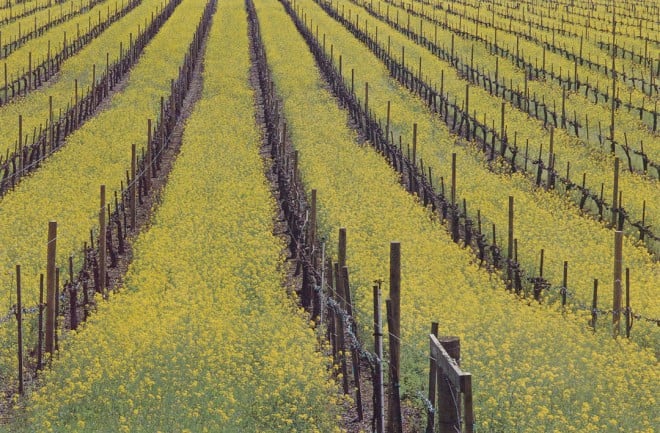
A Gardener’s Notebook: January to March

Contributor
- Topics: Growing for Biodiversity
Thenie Pearsall submitted a few paragraphs from her diary for publication in the Winter ’98 issue of Pacific Horticulture. With delightful observations of the garden and natural world, from her home in Sonoma County, California, she returns for a year-long series of short excerpts from her gardener’s notebook.
January
I was given as a gift, recently, a thermometer that records, for a twenty-four-hour period or until reset, the highest and lowest temperatures reached, so I can now document my long-held belief that both high and low temperatures in my garden, at the bottom of a hill and next to open fields, are actually more extreme than the official records. It really was 14°F the other night; I dragged all the near neighbors over to see for themselves so they wouldn’t accuse me of exaggerating again.
February
The view of the garden from my desk today doesn’t show much promise: rain puddles, weeding not done because of discouraging weather, some roses pruned and others still needing to be. But there are redeeming features: some camellias are blooming, also Daphne odora with its incomparable fragrance, violets, daffodils. Last year, I found a source for Tulipa saxatilis, recommended by a friend, and, because I wanted only a few and the postage would have been more than the bulbs cost, the vendor sent them to me with no charge for bulbs or postage. Gratifying. And they are sending up leaves, but perhaps won’t bloom this year.
The mustard is brilliant right now under the leafless grapevines along the road through the Valley of the Moon. When I drive there, which I do every few days, it’s hard to keep my eyes on the road. I’ve been told that the mustard is there for the practical reason that it helps to provide nitrogen to the grapes; if so, what a happy coincidence of practicality and beauty.

March
When there is nothing new in the soggy garden to look at from the breakfast (often also lunch and dinner) table, we’ve entertained ourselves by watching the birds feeding from a big dish hung in a cherry tree near the window, and observing how the population has changed as the winter progressed. At first it was Oregon juncos, and brown and rufous-sided towhees, which are always here, and an occasional shy hermit thrush; then they are joined by sparrows of varying degrees of beauty and tunefulness, and scrub jays, and finches, and mourning doves (which my mother, for reasons known only to herself, called “rain crows”). This morning a flamboyant woodpecker, a flicker of some sort, with a bright red cap and a pale gold throat swooped down from the top of a nearby oak, made some passes at the trunk of the cherry tree, ate a few seeds and left. Once in a while a little hawk comes and perches nearby, and all the other birds vanish and won’t return until he leaves—although I’ve never seen him attack them. It seems the birds watch us as much as we watch them, although I suppose they are just admiring their own reflections in the glass of the windows.
The wild plum, planted by some particularly tasteful bird years ago directly under the old oak tree at the back of the lot, is in bloom, and frothing upward into the oak’s mossy branches—something like ocean spray but motionless. It is a modest tree, and I forget it’s there the rest of the year, so it surprises me every late winter/early spring when I open the blinds one morning to see it there, all white and glistening in the early morning sun, as I did a week ago. In two weeks more it will be gone again for another year.
Share:
Social Media
Garden Futurist Podcast
Most Popular
Videos
Topics
Related Posts

Ground Up Science for Greener Cities with Garden Futurist Dr. Alessandro Ossola
Spring 2023 Listen to the Podcast here. Alessandro Ossola is a scientist who gets very excited about the challenge of climate change allowing for an

Readying Urban Forests for Climate Realities with Garden Futurist Dr. Greg McPherson
Winter 2023 Listen to the Podcast here. “Going from the mow and blow to a more horticulturally knowledgeable approach to maintaining the landscape. And that

Low Maintenance Gardens – Better for Pollinators and People
Autumn 2022 “I come out every day. It’s therapy, my meditation.” Janet’s young garden transformed from overgrown, invasive plants to mostly natives. The dailiness of

Calochortophilia: A Californian’s Love Affair with a Genus
Summer 2022 I can chart the progression of my life by Calochortus. For the last two decades, at least. As a teenage girl growing up










Responses